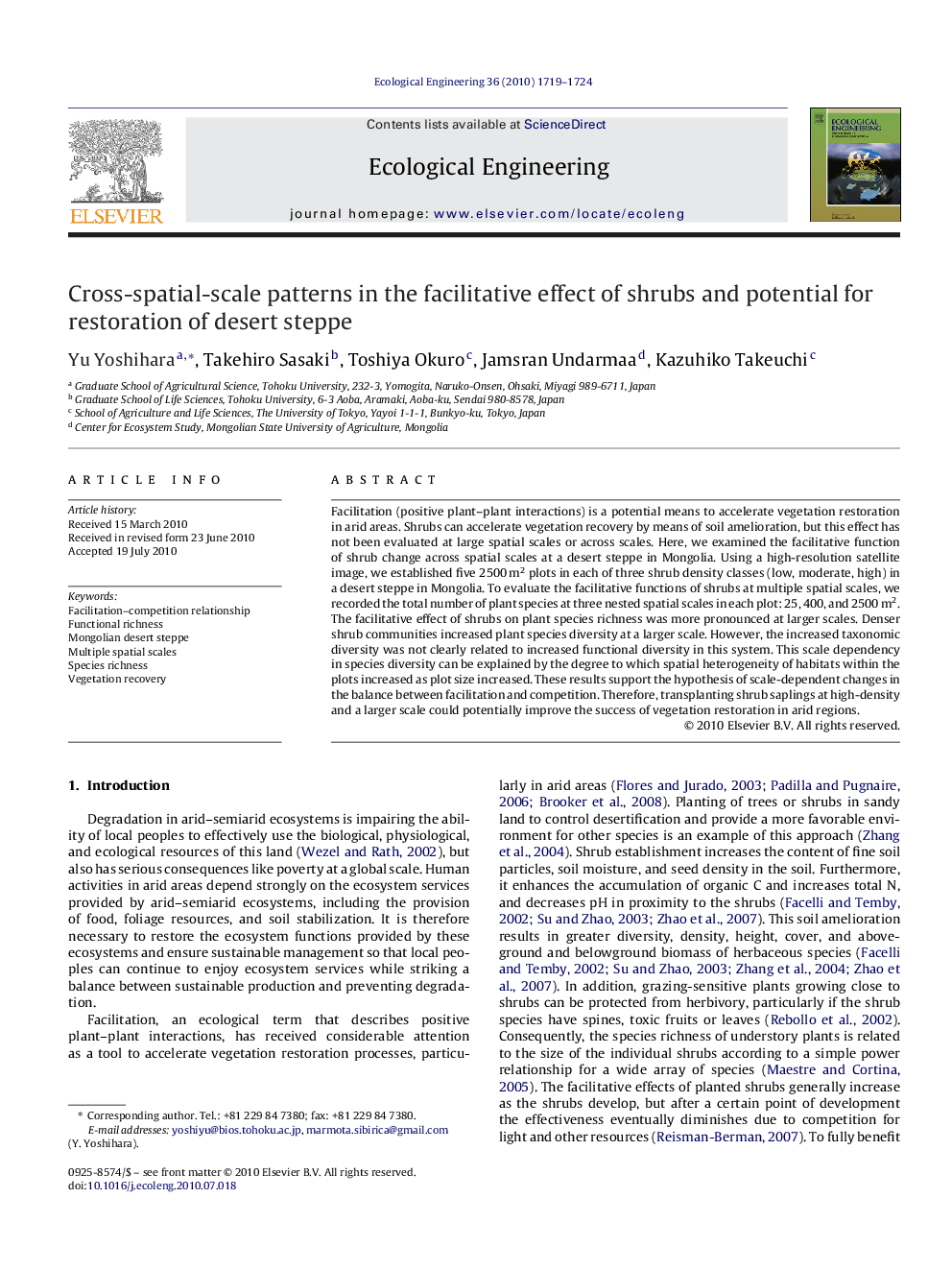| Article ID | Journal | Published Year | Pages | File Type |
|---|---|---|---|---|
| 4390484 | Ecological Engineering | 2010 | 6 Pages |
Facilitation (positive plant–plant interactions) is a potential means to accelerate vegetation restoration in arid areas. Shrubs can accelerate vegetation recovery by means of soil amelioration, but this effect has not been evaluated at large spatial scales or across scales. Here, we examined the facilitative function of shrub change across spatial scales at a desert steppe in Mongolia. Using a high-resolution satellite image, we established five 2500 m2 plots in each of three shrub density classes (low, moderate, high) in a desert steppe in Mongolia. To evaluate the facilitative functions of shrubs at multiple spatial scales, we recorded the total number of plant species at three nested spatial scales in each plot: 25, 400, and 2500 m2. The facilitative effect of shrubs on plant species richness was more pronounced at larger scales. Denser shrub communities increased plant species diversity at a larger scale. However, the increased taxonomic diversity was not clearly related to increased functional diversity in this system. This scale dependency in species diversity can be explained by the degree to which spatial heterogeneity of habitats within the plots increased as plot size increased. These results support the hypothesis of scale-dependent changes in the balance between facilitation and competition. Therefore, transplanting shrub saplings at high-density and a larger scale could potentially improve the success of vegetation restoration in arid regions.
